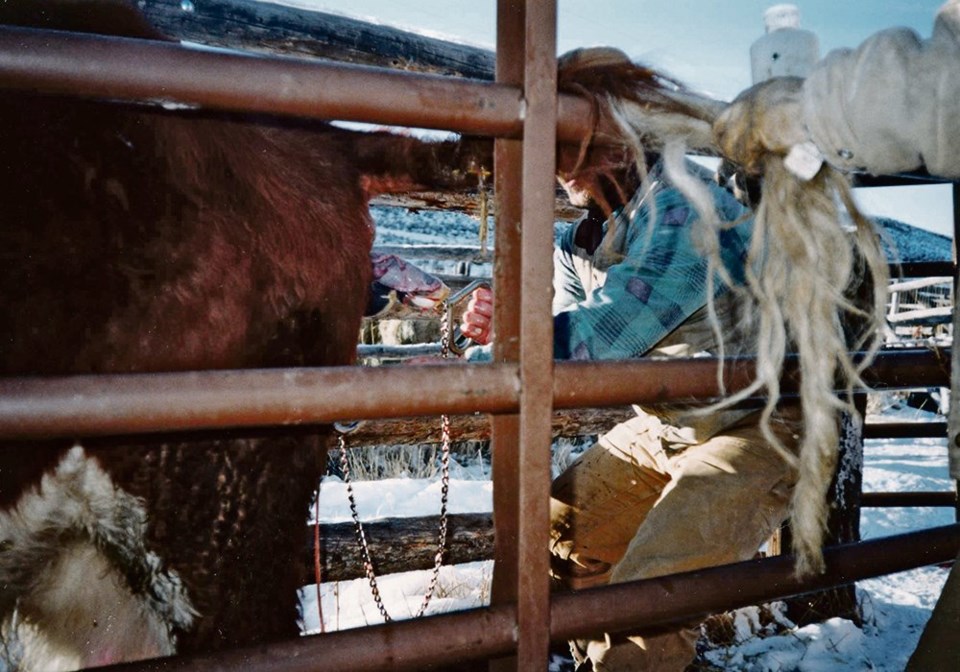COLEDALE, Alta. — Uterine infections in cows are most commonly caused by retained placentas and by calving problems that damage the uterus and birth canal.
Dr. Steve Hendrick of the Coaldale Veterinary Clinic in Coaldale, Alta., says most of the research on uterine infections involves dairy cattle but the problem also occurs fairly often in beef cows.
“As you watch a cow give birth and the calf’s feet are coming out, there is often manure deposited on them as the cow defecates while straining. If the calf’s feet and legs are going in and out, some of that manure gets inside the cow.”
He advises those who assist a birth, by inserting an arm to reposition a calf or apply chains, to be as clean as possible. Wash the back end of the cow first and use a clean obstetrical sleeve with lots of lubricant.
“Sometimes when pulling the calf with chains, we may scrape the lining of the birth canal,” says Hendrick. “Trauma may create an opening for pathogens to start an infection. We generally see higher incidence of infection in heifers, just because they may have a harder time calving.
“An assisted birth or twins may have higher risk for retained placenta or uterine infection.”
Any infection or contamination in the vagina may move into the uterus while the cervix is still dilated from calving. Most cows clear the infection within a few days or weeks but some take longer, depending on their health and immune system. A long-standing uterine infection can make a cow infertile.
A placenta that takes longer than 24 hours to shed will always produce a local infection in the uterus, since those tissue attachments must rot away. This infection may clear quickly after the cow cleans but sometimes lasts longer.
“If more than three percent of cows in a herd have retained placenta during calving season, there may be an underlying nutritional deficiency, perhaps shortage of certain minerals,” says Hendrick.
“This year, especially, I worry that some producers have cut costs because feed has been so expensive after last year’s drought. Sometimes those shortcuts come back to bite us. Vitamins A and E and trace minerals like selenium are important and we need to make sure cattle have adequate supplementation.
“Some people give vitamins and minerals by injection right before calving to try to minimize problems, but supplementing in the feed all along is better.”
Many factors might be involved in determining the risk of retained placentas or uterine infections after calving.
“Ramping up the nutrition may help, but in some cases, it may also be a function of stresses they experience before and after calving — how much the cow is milking, for instance, pulling her down in body condition.”
Any cow that retains the placenta or has a pus discharge after calving should be watched closely.
“I am still ‘old school’ when it comes to selecting an antibiotic for this,” says Hendrick. “I think short-acting penicillin is still as good as anything. There are other antibiotics your veterinarian may recommend or use, but penicillin is still very effective.”
Systemic antibiotics are better than putting anything into the uterus, according to Dr. George Barrington of Washington State University.
“A study done years ago by a student here looked at neutrophil migration to the uterus. He found that even putting buffered sterile saline into the uterus slowed down this migration of white blood cells that combat infection. This suggests that putting anything into the uterus or infusing it with medication could be counterproductive,” he says.
Systemic antibiotics are more beneficial against systemic infection.
“We are limited now, however, on what drugs we can use. We can still use penicillin, which is actually a good one as long as we observe appropriate withdrawal times,” Barrington says.
“Ceftiofur has historically been a good choice due to its wide spectrum. If you consult with your veterinarian, he/she could prescribe an appropriate antibiotic and suggest an appropriate withdrawal period.
“Otherwise, regular procaine penicillin G is a good drug to use. Stick with label dosage unless you talk with a veterinarian to figure out what the withdrawal time would be if he/she suggests a higher dose.”
Hendrick says most veterinarians don’t recommend putting boluses in the uterus after a difficult calving to prevent infection. It is not as helpful as once thought and may introduce more pathogens.
“It’s better to give an injectable antibiotic later, if the cow develops infection that needs to be treated,” he says.
A serious infection can become systemic so the cow needs a systemic antibiotic. These cases can become deadly, especially if there’s a tear in the uterus from a difficult calving, leading to peritonitis. It can be hard to save these cows.
“Even if infection remains local, in the uterus, and the cow takes a while to overcome it, this will be costly if she takes longer to breed back. In dairies we spend a lot of time trying to identify and treat early infections, to clear them up quickly so the cow will rebreed on time,” Hendrick says.
“There hasn’t been a study of beef cows. Everyone assumes they have a lower rate of post-calving infections than dairy cows, which is probably true, but some herds do have uterine infections frequently and as bad as some of the dairies.”




